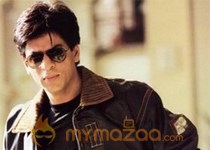There are hardly any Indians in this booming capital of the southern Chinese island province, known for its sandy beaches, exotic sea food and spanking new high-rises. But Bollywood is never far behind – if you are ‘Yindu’ (Chinese for India and Indians), they expect you to sing “Awara Hoon”.
The Raj Kapoor-starrer was a roaring success in the newly-Communist China of the 1950s and continues to strike a chord with the Chinese, especially the older generation, as it kindles a yearning for freedom and a carefree life.
Says Li Ming, a 50-something restaurateur in downtown Haiku: “I love the joyous beats of this song. It has been translated into Chinese and is often played in discos and at parties.”
Guo, a student at Hainan University says in her halting English: “If they (the Chinese here) meet Yindu, they feel they must know how to sing and dance. Indians are really good dancers.”
At a reception hosted for visiting Indian academics in this coastal capital of Hainan province, Chinese scholars could not resist the temptation to sing “Awara Hoon,” each in their own inimitable Chinese accent.
China’s affair with Bollywood has had ups and downs. In fact, Indian films were among the first foreign films shown in China after it started opening up in the 1970s and continue to frame the Chinese view of India. Another Indian film that became a bit of rage with Chinese teenagers was “Noori” in the 1980s.
The interest in Bollywood faded off into nostalgia soon after, but with India emerging as a rising power along with China in the late 1990s and with more Chinese travelling overseas, the fascination for Bollywood song and dance spectaculars has been revived again.
Shah Rukh Khan and Aishwarya Rai are the new favourites. Films like “Asoka” and “Devdas” have been screened by many Chinese TV channels, says Zhang Kang, an expatriate Chinese who lived in New York for many years.
“Lagaan” – called in China “Once Upon a Time in India” about a patriotic movie that dramatises a cricket game played between a rag-tag team of villagers and British imperial authorities – has also caught the imagination of the new generation.
In the last few years, India has deftly indulged in Bollywood promotion in China, part of soft power diplomacy that both sides feel help in creating a positive atmosphere for nurturing bilateral ties that often get entangled in sensitive issues.
“It’s important to promote better understanding of each other’s culture,” says Ma Jiali, a South Asia expert at China’s Institute of Contemporary International Relations.
Two years ago, the “Merchants of Bollywood”, a musical conceived by Australian Tony Gough and choreographed by Mumbai-based Vaibhavi Merchant, travelled across 10 cities to China, making the Chinese sway to the beats of Hindi songs.
At the Shanghai Expo last year, many Hindi film stars descended on the city. A 90-minute lavish musical, “Ticket to Bollywood”, gave the Chinese a flavour of the legendary Bollywood razzmatazz.
There are also talks between Bollywood and Indian Chinese filmmakers, but a genuine crossover film has yet to take off as it’s difficult to get permission for foreign companies to shoot in the country. The Chinese movie industry follows a quota system which only allows around 20 foreign films to be screened a year.











